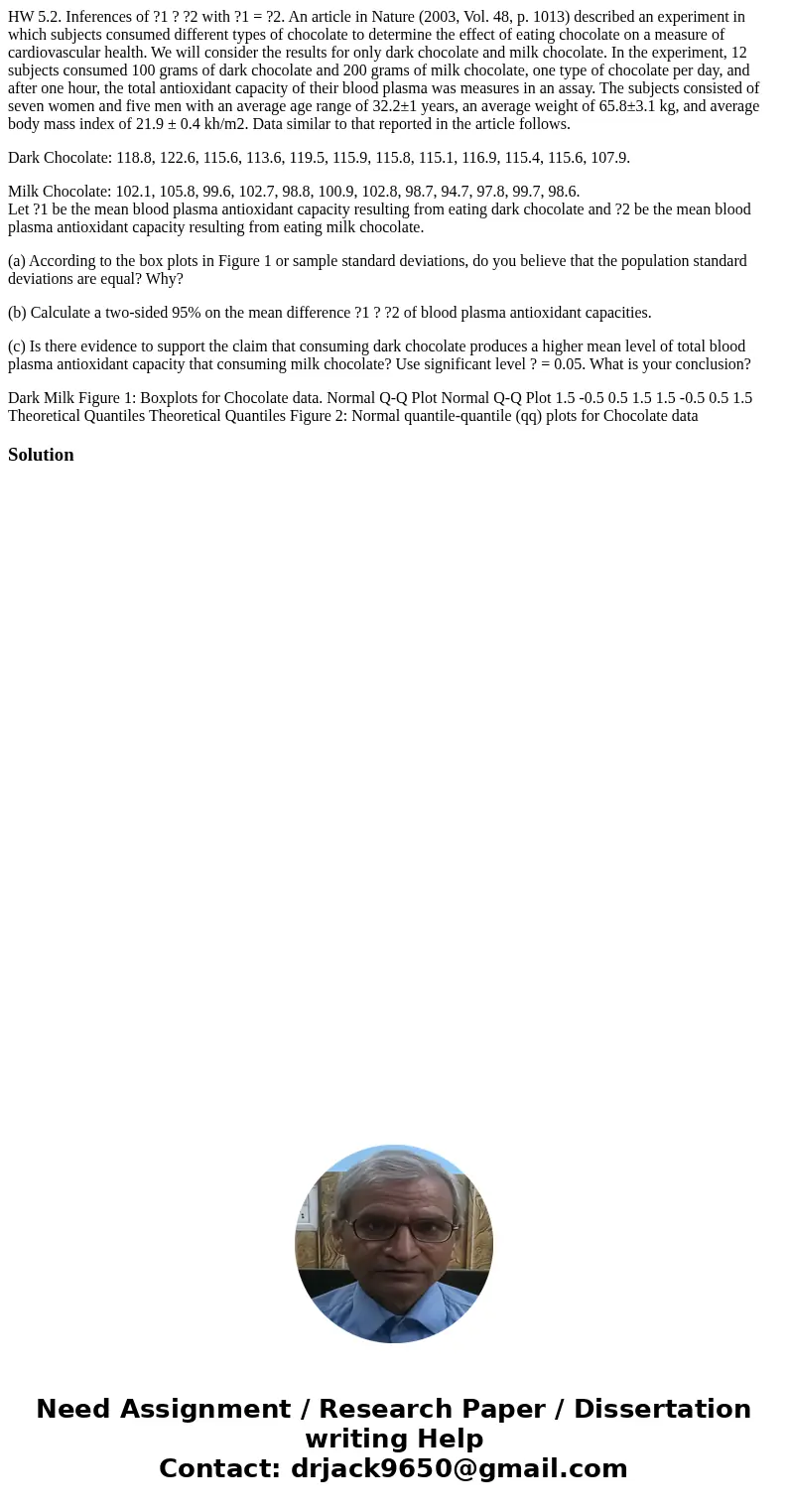HW 52 Inferences of 1 2 with 1 2 An article in Nature 2003
HW 5.2. Inferences of ?1 ? ?2 with ?1 = ?2. An article in Nature (2003, Vol. 48, p. 1013) described an experiment in which subjects consumed different types of chocolate to determine the effect of eating chocolate on a measure of cardiovascular health. We will consider the results for only dark chocolate and milk chocolate. In the experiment, 12 subjects consumed 100 grams of dark chocolate and 200 grams of milk chocolate, one type of chocolate per day, and after one hour, the total antioxidant capacity of their blood plasma was measures in an assay. The subjects consisted of seven women and five men with an average age range of 32.2±1 years, an average weight of 65.8±3.1 kg, and average body mass index of 21.9 ± 0.4 kh/m2. Data similar to that reported in the article follows.
Dark Chocolate: 118.8, 122.6, 115.6, 113.6, 119.5, 115.9, 115.8, 115.1, 116.9, 115.4, 115.6, 107.9.
Milk Chocolate: 102.1, 105.8, 99.6, 102.7, 98.8, 100.9, 102.8, 98.7, 94.7, 97.8, 99.7, 98.6.
Let ?1 be the mean blood plasma antioxidant capacity resulting from eating dark chocolate and ?2 be the mean blood plasma antioxidant capacity resulting from eating milk chocolate.
(a) According to the box plots in Figure 1 or sample standard deviations, do you believe that the population standard deviations are equal? Why?
(b) Calculate a two-sided 95% on the mean difference ?1 ? ?2 of blood plasma antioxidant capacities.
(c) Is there evidence to support the claim that consuming dark chocolate produces a higher mean level of total blood plasma antioxidant capacity that consuming milk chocolate? Use significant level ? = 0.05. What is your conclusion?
Dark Milk Figure 1: Boxplots for Chocolate data. Normal Q-Q Plot Normal Q-Q Plot 1.5 -0.5 0.5 1.5 1.5 -0.5 0.5 1.5 Theoretical Quantiles Theoretical Quantiles Figure 2: Normal quantile-quantile (qq) plots for Chocolate dataSolution

 Homework Sourse
Homework Sourse